Finding unique decor for your house can be an exciting process. For example, did you recently purchase a Japanese screen and want to hang it rather than have it rest on the floor? Is there a way to do this safely without damaging your beautiful screen?
Well, we've done some digging and have how to do this below!
If you need to hang a Japanese screen on the wall, this won't require too much setup.
To start:
- Purchase screen clips (usually in a set for Japanese screen hanging).
- Attach double-sided tape to the clips.
- Figure out where you want your screen on the wall.
- Stick your clips to the Japanese screen and press them onto the wall.
- Press your screen long enough to stay in place and adjust its position if needed.
So, you can see that doing this should be pretty easy as long as you have screen-hanging clips. We recommend a mounting set or brackets to keep your Japanese wall piece damage-free.
As we start this post, we'll discuss how to hang a Japanese screen properly and give other helpful tips and tricks. Whether you have other screens in your home or this is your first, we're here to assist you. With that said, let's dive right in!
Can You Hang A Japanese Screen On The Wall?
Yes! If you have a Japanese screen (also known as a byobu), you can certainly hang it on the wall. Generally, you want to use a mounting kit with sticky tape to secure your screen, as nails will damage it.
Like using Command strips to hang a wall shelf or other artwork, this is a similar process for your byobu. Moreover, many screen clips will come in different colors, which you can match to your screen.
The key is making the clips as unnoticeable as possible. You don't want anything to take attention away from your beautiful piece of artwork.
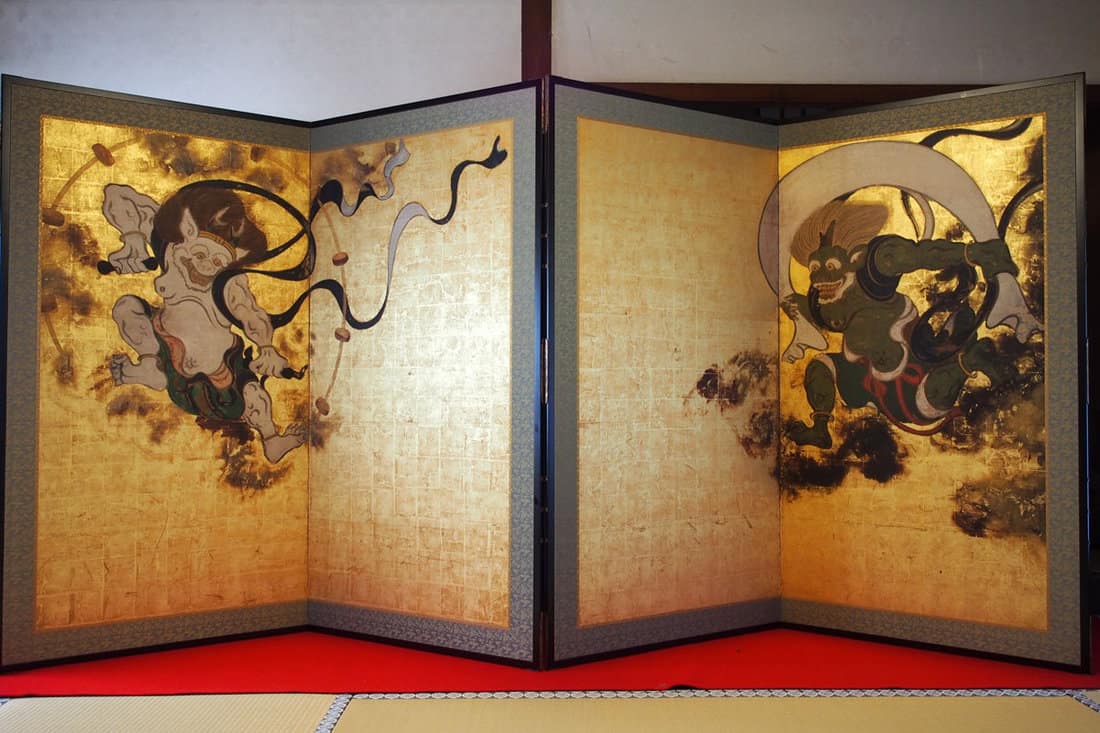
It's also worth noting that hanging a Japanese screen rather than having it on the ground can keep it safer long-term. For example, if your screen is leaning against a wall, your vacuum or other furniture could brush up against it.
Since many Japanese screens are thin, that might lead to severe damage. Therefore, we recommend bringing your screen as high as possible, all while using a mounting kit with clips.
How Do You Hang A Japanese Screen On The Wall?
If you need to hang your Japanese screen on the wall, purchase a byobu mounting kit. As we mentioned, you need to use double-sided adhesives with your clips to secure the screen on the wall.
Regardless of the design or size of a Japanese screen, you want to avoid aggressive hammering, screws, and nails. The material of these screens is usually thin and fragile, meaning damage happens easier.
Once you have all of your required materials:
- Attach the double-sided tape to the backs of your screen clips.
- Have 1-2 people position the screen on the wall (you might want to mark each corner)
- Attach the clips to your Japanese screen.
- Press the clips onto the wall, reposition your screen if needed, and you're set!
Hanging a Japanese screen is pretty simple as long as you use the right tools. Unlike sticking an ordinary Command strip to the border of your screen, a clip will hold it in place without damaging it.
This can help keep the effects of mounting your artwork to a minimum.
What Are Japanese Screens Made Of?
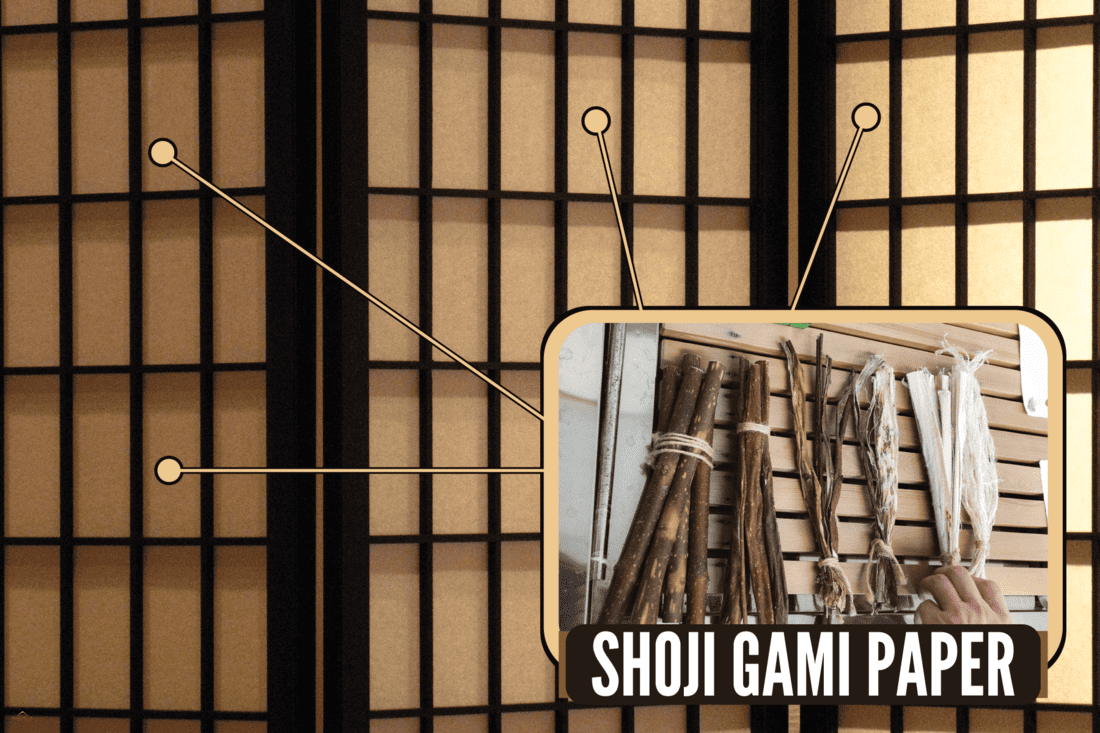
Most Japanese screens are made with fine paper. This paper material is also called "Shoji Gami Paper," which is very delicate and cannot withstand rough treatment.
Furthermore, most Japanese screen paper comes from bleached or unbleached Mulberry. On top of that, your screen will be somewhat translucent, often stretched over a wooden frame holding together a lattice of wood or bamboo.
In Japan, you'll notice these screens are used as dividers between rooms and spaces while incredibly fragile and somewhat see-through.
The idea of using Japanese screens for wall art has become more popular here in the US over the years as we've discovered more of the country's rich culture.
According to Japan Objects, these screens have been a staple of the home since pre-modern Japan. So, even if you're just hearing of them, they've been around for centuries.
The main factor to remember when hanging one is that it's fragile and needs close attention.
Do You Have To Be Delicate With A Japanese Screen?
Yes! Even though your Japanese screen may be great for wall art and dividing spaces, you need to be gentle with it. As we said above, these screens are usually fine paper material.
Therefore, you want to avoid piercing them or being too rowdy around them. Especially while you hang your Japanese screen, it's imperative to have someone help you.
Since these screens are usually quite large, the more hands, the better. In addition, you want to ensure your hands are clean before touching a Japanese byobu.
Even the grease from our hands can damage the paper on your screen, so this is something to remember. Of course, a slight bump here and there shouldn't destroy your Japanese wall art, so don't panic.
Ideally, you will hang your screen somewhere dry, out of the sun, and away from floor traffic.
Can I Use Command Strips To Hang A Japanese Screen?
We may include affiliate links and curated AI content to highlight top design styles.
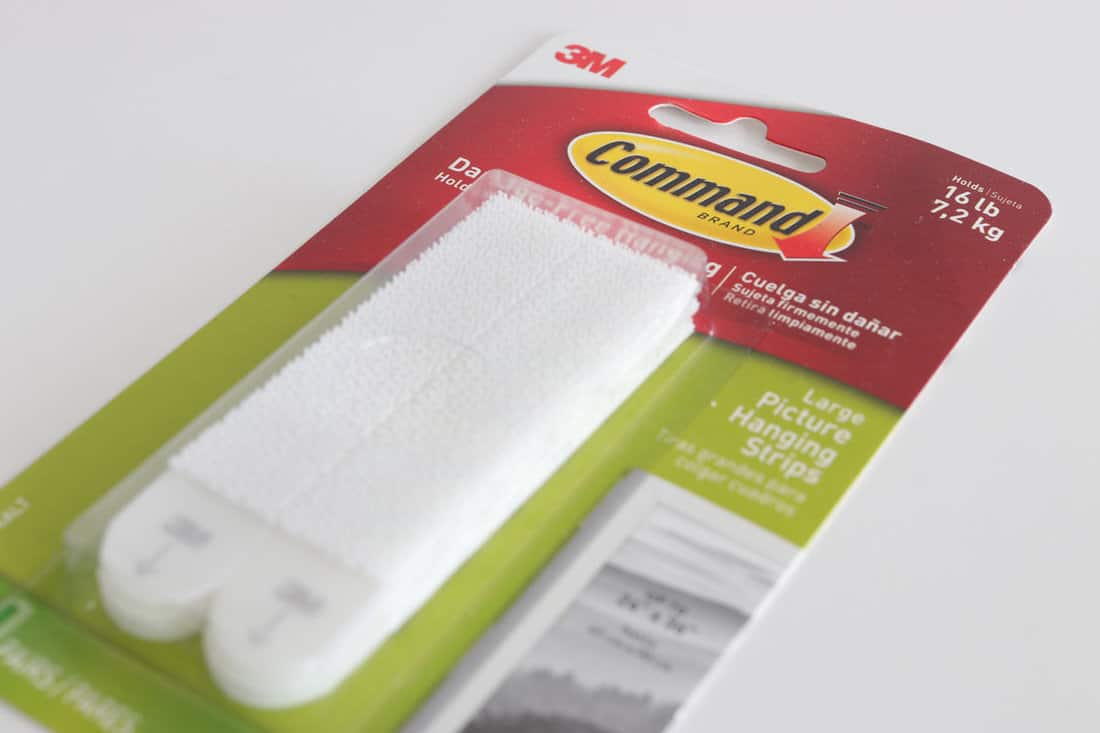
No. We do not recommend trying to hang a Japanese screen with Command strips. As we noted, Japanese screens are made using delicate paper surrounded by a bamboo/wood border.
Therefore, attaching the strips to your screen will destroy it. On top of that, Command strips don't respond well to uneven surfaces, like wood, which also spells trouble.
Since the Japanese byobu is made of wood and paper, these are two materials Command strips aren't suited for. Even if you can get the screen up with a strip, the chances of it falling in a week or so are pretty high.
Moisture causes the adhesive strips Command makes to peel from the wall, which can be problematic for hanging expensive/delicate artwork.
So, if possible, we recommend shifting gears to a mounting kit, which will keep your screen on the wall. Usually, you can find these at traditional Japanese stores and online, where screens are sold.
Many online users have reported damage from Command strips on their Japanese screens, so use their mistake as an ode of caution.
Can I Nail A Japanese Screen To My Wall?
Although you technically could nail a Japanese screen to the wall: we do not recommend this. If you don't want to mess around with double-sided tape, the next best idea would be screws.
You can add a few screws to the wall, attaching your screen's mounting bracket(s). This will give your screen more of a sturdy, permanent hanging rather than a possibly dangerous adhesive one.
Sometimes, the tape you use to hang your Japanese screen wears out. When this happens, your screen may fall off the wall, becoming damaged once it hits the ground.
That said, adding screws to your wall and hanging your screen as a picture frame might be a nice choice. Again, this can depend on whether your screen has a bracket attached, so some people may be unable to do this.
Regardless, we don't recommend hammering or screwing anything into your screen. This will crack its wooden frame and potentially tear the paper.
Can A Japanese Screen Get Wet?
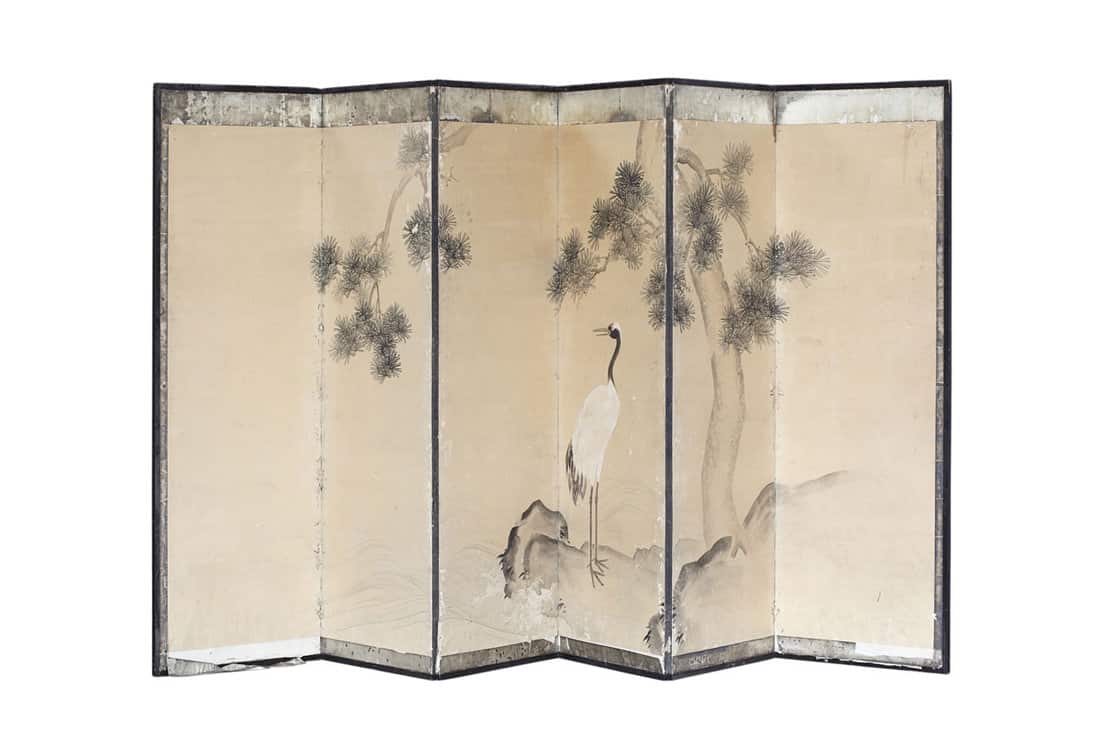
No. A Japanese screen cannot and should not get wet. Considering your screen is wood and paper, moisture can warp it and even eat away at its coloring.
Many design experts warn against hanging a Japanese byobu in bathrooms, as this is a recipe for color bleeding and frame damage.
Interestingly, even laminated Japanese screens shouldn't be near moisture. So, even if your screen has a top coat or laminated finish, you still shouldn't have it in the bathroom or a moist spot in your house.
Another potentially hazardous place for your Japanese screen could be the laundry room or kitchen, which both get humid while you use them.
So, if possible, only hang your Japanese screen somewhere dry all the time.
Where Is The Best Place To Hang A Japanese Screen?

When it comes to the best place for hanging a Japanese screen, we suggest the living room, dining room, hallway, bedroom, or even foyer.
As we covered, you want to steer clear of hanging a Japanese screen where water is prevalent. Moreover, you also want to keep your screen in a spot people can appreciate it and keep a comfortable distance.
One mistake homeowners make when hanging their Japanese screen is placing it in a high-traffic area. For example, if you have your byobu in a busy hallway with a tight walking room: expect it to come tumbling down eventually.
The same goes for hanging your screen in an exposed area near a window you like to keep open or the bathroom/laundry room/kitchen.
The more protected your piece of art, the better.
To Wrap It Up
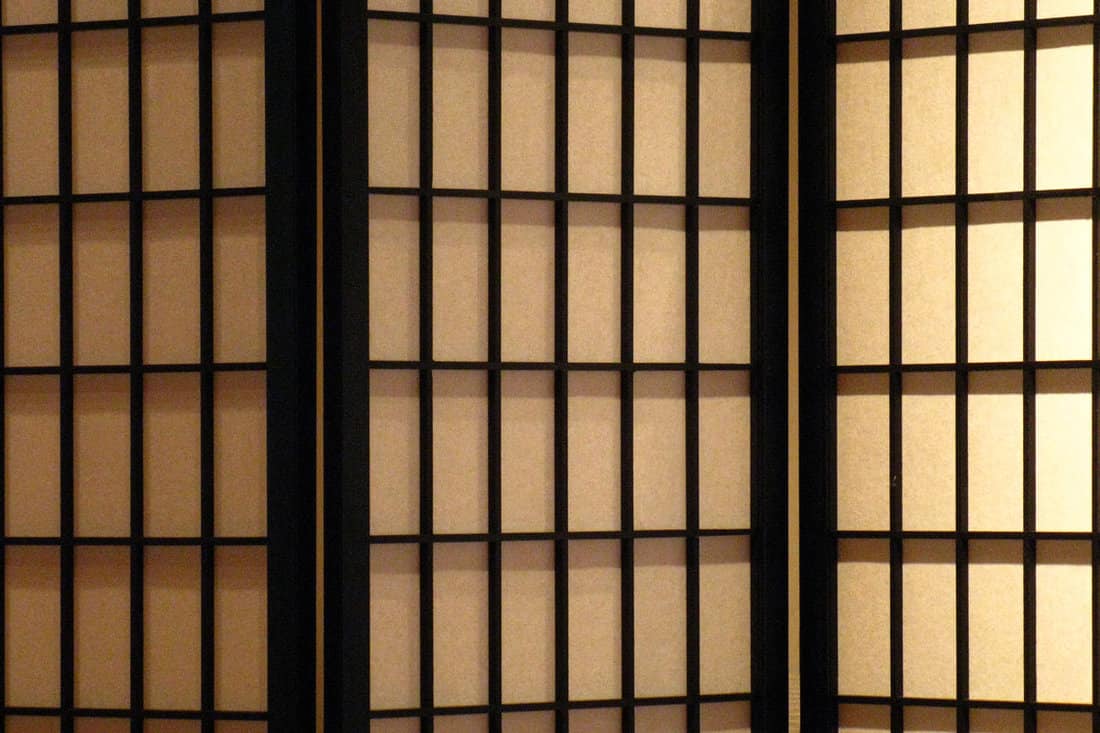
Whether you recently bought a Japanese screen or have one in storage, it's always nice to find new ways to show it off. We found that you can hang a Japanese byobu on the wall, ideally using a mounting kit.
You want to use the clips and double-sided tape in your mounting kit to secure the screen to the wall. This should be permanent as long as your room and screen don't get wet.
It's also possible to mount the back bracket of your screen to screws in the wall, so that's an alternative to consider.
While we have you with us, check out these related home articles below:
How To Hang A Whiteboard Without Nails

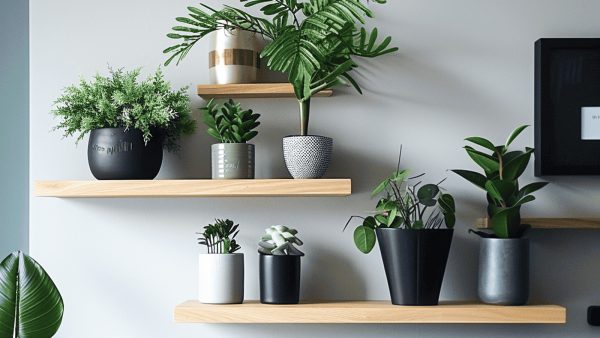
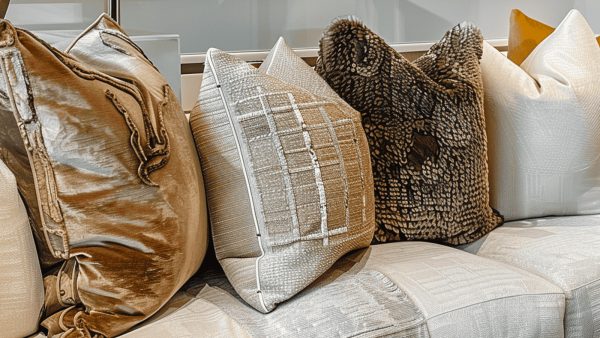

Can you share links to recommended adhesive brackets to hand a light, 4-panel byobu?